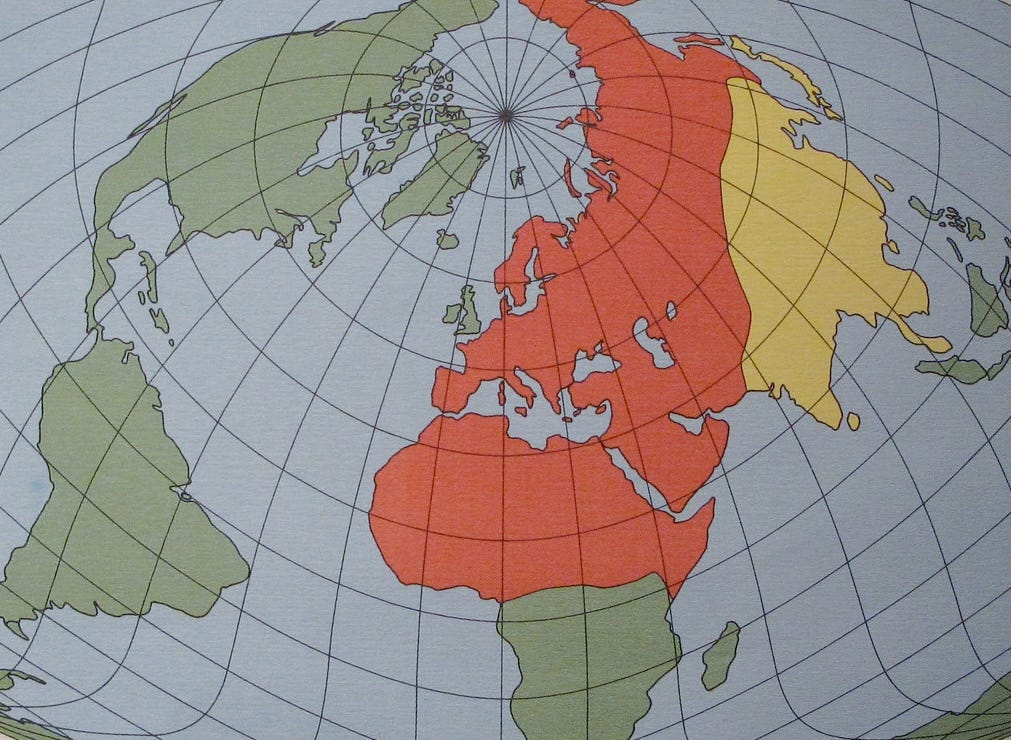Week signals: A world with three poles
Plus: watch points for Germany, Canada, France, Britain, Mexico, and Sudan.

This week:
IN REVIEW. Multipolarity in fact and fiction, reverse Nixons, the rough quadrilateral, and business in a three-body world.
UP AHEAD. Germany votes, Ontario’s election, Messrs Macron and Starmer go to Washington, a Mexican countdown, and a Darfur-letter word.
Week Signals is the Saturday note for clients of Geopolitical Strategy, also available to GD Professional subscribers on Geopolitical Dispatch. Click here to learn more.
The Week in Review: Welcome to multipolarity
The week began with emergency talks in Paris, as Europe grappled with a new sheriff in town. It ended with that sheriff sacking the chair of the Joint Chiefs of Staff, and the Wuhan Institute of Virology reporting a new coronavirus. So far, so 2020. Even Jair Bolsonaro was in the news again. But what really made the week noteworthy was a meeting in Riyadh between Russia and the US, followed by the seeming collapse of American support to Ukraine.
To many (including us), the week recalled that of February 1945, when the “Big Three” – Churchill, FDR, and Stalin – met in Yalta on the Crimean Peninsula to design a new post-war order. It also contained shades of (a fictionalised) 1984, with its Oceania (led by the US), Eastasia (China), and Eurasia (Russia). Leaving aside the fact that middle powers like India, Brazil and Turkey will still have enormous agency in our own brave new world, it’s a useful exercise to imagine what a real tripolar version of multipolarity might look like. Not so much in respect to Orwell’s authoritarian themes (though at least two of today’s emerging poles exhibit such tendencies), but the geopolitical ones. How do multinational companies and cross-border investors grapple with a world, like Caesar’s Gaul, that’s divided into three?
First, a primer on great powers (aka empires). Traditionally, the empires that do best in the modern world are those where the “metropole” (the centre) is the source of manufacturing and capital, and where the “periphery” (the colonies, the allies) is the source of commodities and consumption. Perhaps Trump is a secret reader of 1960s Marxist economics, or maybe he grasps this intuitively, but his America First agenda maps neatly on this approach.
Second, a primer on the geographic theories that informed George Orwell. We referenced the ideas of British geographer Halford Mackinder in an early Geopolitical Dispatch. To Mackinder, the world can be divided into spheres: the World Island (Afro-Eurasia), the Offshore Islands (from Britain to Japan), and the Outer Islands (Australasia to the Americas). Future wars would be fought over who controls the ‘Heartland’ (Ukraine to Afghanistan) within the ‘World Island’. And so far, in fiction and real life, nobody has fully controlled it. In 1984, the battle was between Eurasia and Eastasia, with Oceania given a balancing role. In the Cold War, it was again a Russia-China and offshore US story.
What we see Trump as doing, intentionally or not, is dividing East Asia and Eurasia again, with his “reverse Nixon” ploy of détente (possibly even entente) with Putin. This would not just divide the “Axis of Upheaval” (Iran, Russia, China, North Korea), but the BRICS (which Trump has shown a particular interest in). It also maps onto his aims for arms reduction (something that requires “big three” cooperation too). But where does it leave everyone else?


